
The fresco of the artist Sandro Botticelli “St. Augustine the Blessed in prayerful contemplation.” The size of the fresco is 152 x 112 cm, Botticelli’s work is severely damaged. The fresco is written for the family chapel of Vespucci, the coat of arms of the family is present in the mural. The image of Augustine created by the artist Sandro Botticelli as a pairing to the image of St. Jerome, written by Ghirlandaio. Both murals were made in 1480, both decorate the church of Onisanti in Florence, being in the same part of the interior space opposite each other.
The artists invested in them both remarkable skill and the depth of the penetration of the images, but the involuntary juxtaposition of the figures of these saints convinces the superiority of the work of Sandro Botticelli. Sandro Botticelli portrayed St. Augustine – one of the fathers of the Church, the personality of genius giftedness and tragic contradictions. In his soul faced paganism and Christianity, reason and will, worldly passions and asceticism. A deep connoisseur of ancient wisdom, Augustine went through a difficult path to accepting the Christian faith and the last 35 years of his life he was a bishop, creating an encyclopedic in scope doctrine.
Augustine is depicted in a moment of reflection, when he painfully and passionately seeks to come to the truth, eager for direct communication with God. On the table in front of him is a symbolic attribute – the episcopal miter, and the rest of the space is occupied by manuscripts, closed and open, a reading stand and scientific instruments.
The room in which Augustine is absorbed in meditation resembles a studio, or a cabinet of a Renaissance humanist. By the way, Augustine’s writings aroused interest in the Florentine Neoplatonists of the second half of the 15th century. In the powerful figure of the saint, in his painfully inquiring glance, in a gesture of the hand touching the heart, the artist conveyed the internal struggles and the strength of the spirit, which was directed upwards. In this figure lies a clear seal of Castaño’s influence. It affects the intense energy of the forms and the muffled color, as if emphasizing their “stone” nature.
The objects surrounding St. Augustine – the music stand, books, scientific instruments – are depicted with precision and clarity, revealing the artist’s ability to grasp the essence of the form, but they are not striking and distracting from the main thing. Perhaps this interest in objectivity per se is due to the influence of Dutch painting, which caused admiration of the Florentines of the 15th century. Italian artists of the Renaissance interpreted the image of Augustine differently, as exemplified by the interpretation given by the Venetian master Vittore Carpaccio. “In the person of this Saint Botticelli expressed the depth, sharpness and subtlety of thought that is characteristic of persons who are full of wisdom and constantly immersed in the study of objects of the highest and most difficult.” Giorgio Vasari. “Biography of Botticelli.”
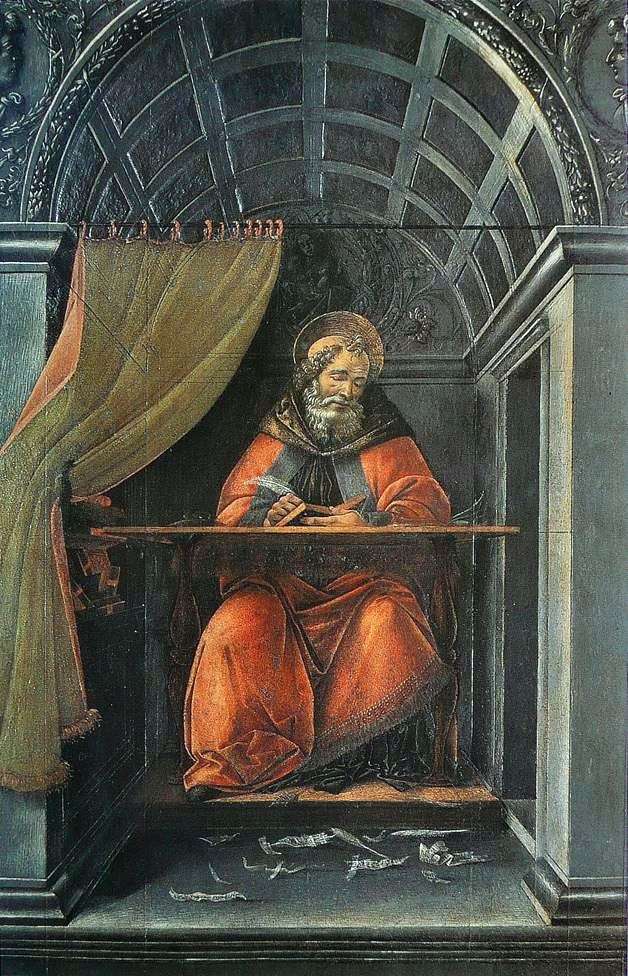 St. Augustine, writing in his cell by Sandro Botticelli
St. Augustine, writing in his cell by Sandro Botticelli The vision of St. Augustine by Sandro Botticelli
The vision of St. Augustine by Sandro Botticelli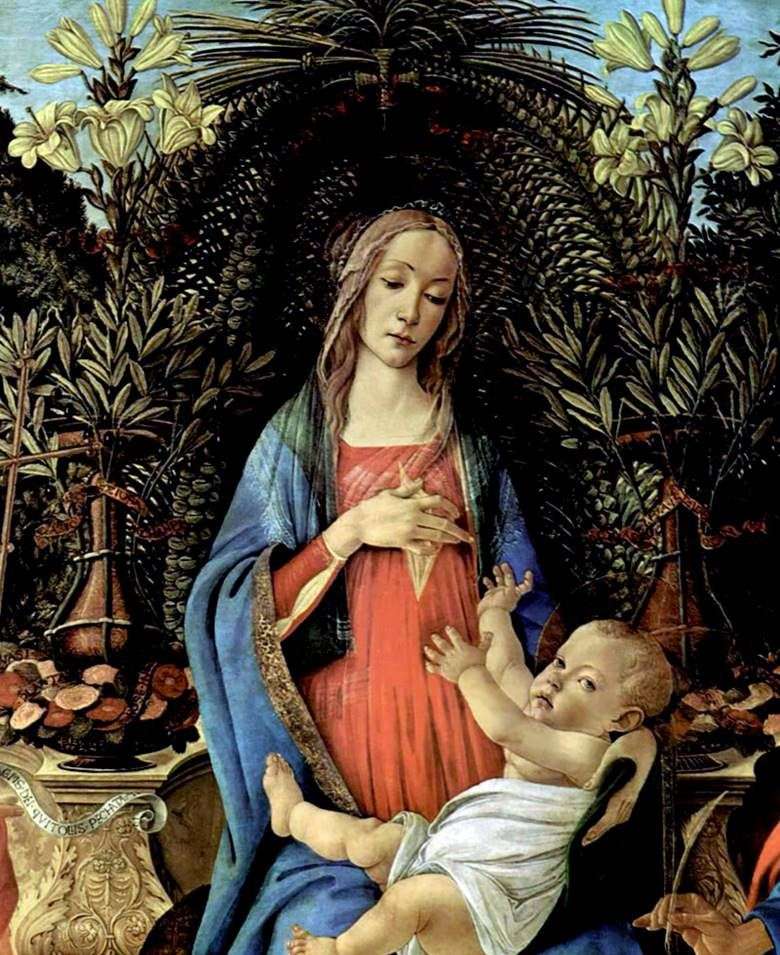 Madonna Bardie by Sandro Botticelli
Madonna Bardie by Sandro Botticelli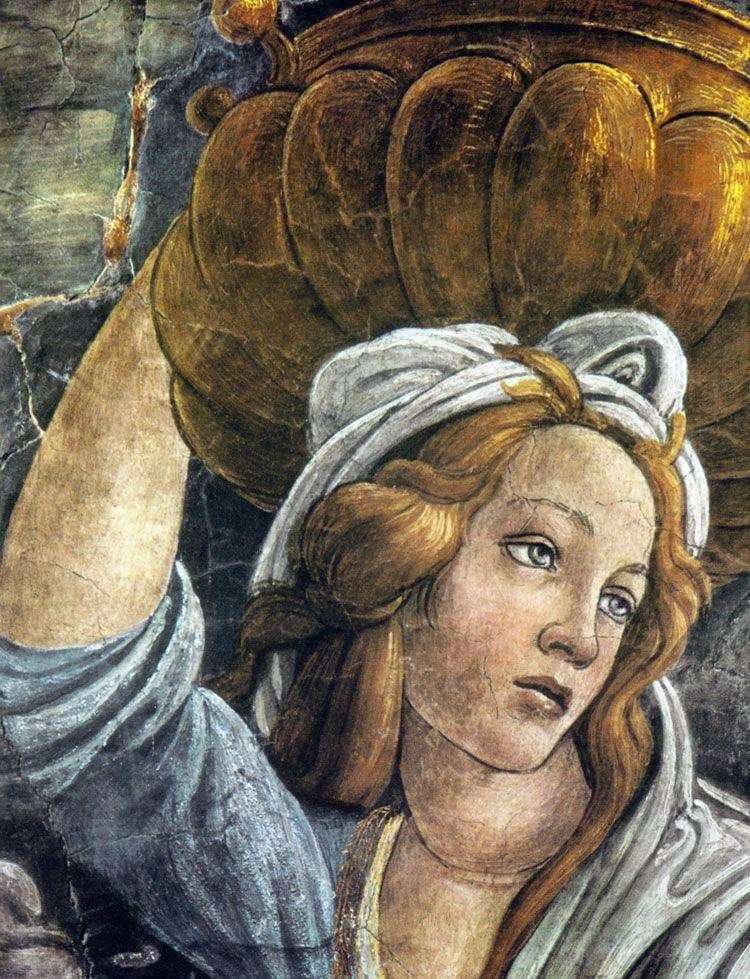 Daughter of Jethro (fragment) by Sandro Botticelli
Daughter of Jethro (fragment) by Sandro Botticelli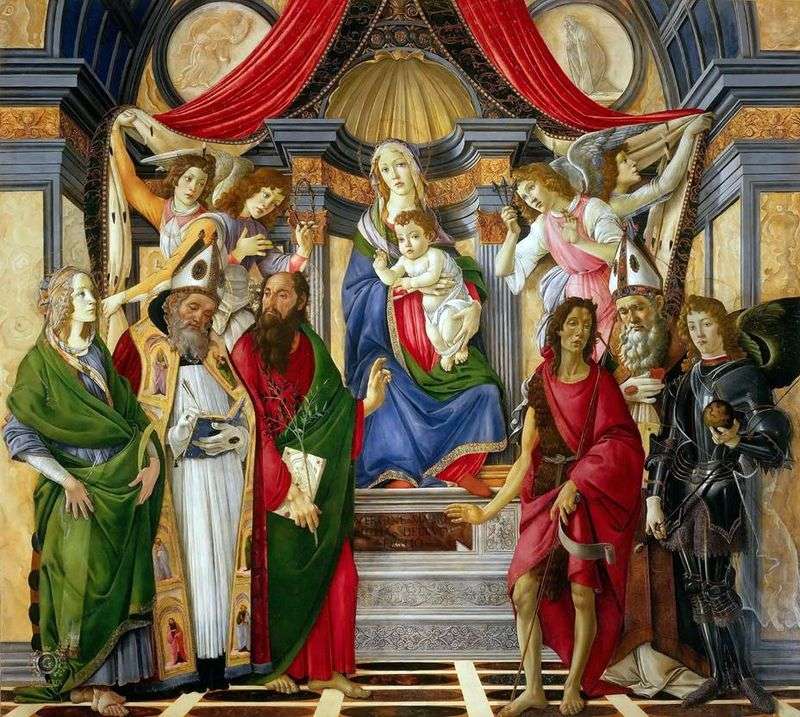 The Altar of St. Barnaby by Sandro Botticelli
The Altar of St. Barnaby by Sandro Botticelli The altar of San Marco, or the Coronation of Mary with the angels, the Evangelist John and St. Augustine, Jerome and Eligius by Sandro Botticelli
The altar of San Marco, or the Coronation of Mary with the angels, the Evangelist John and St. Augustine, Jerome and Eligius by Sandro Botticelli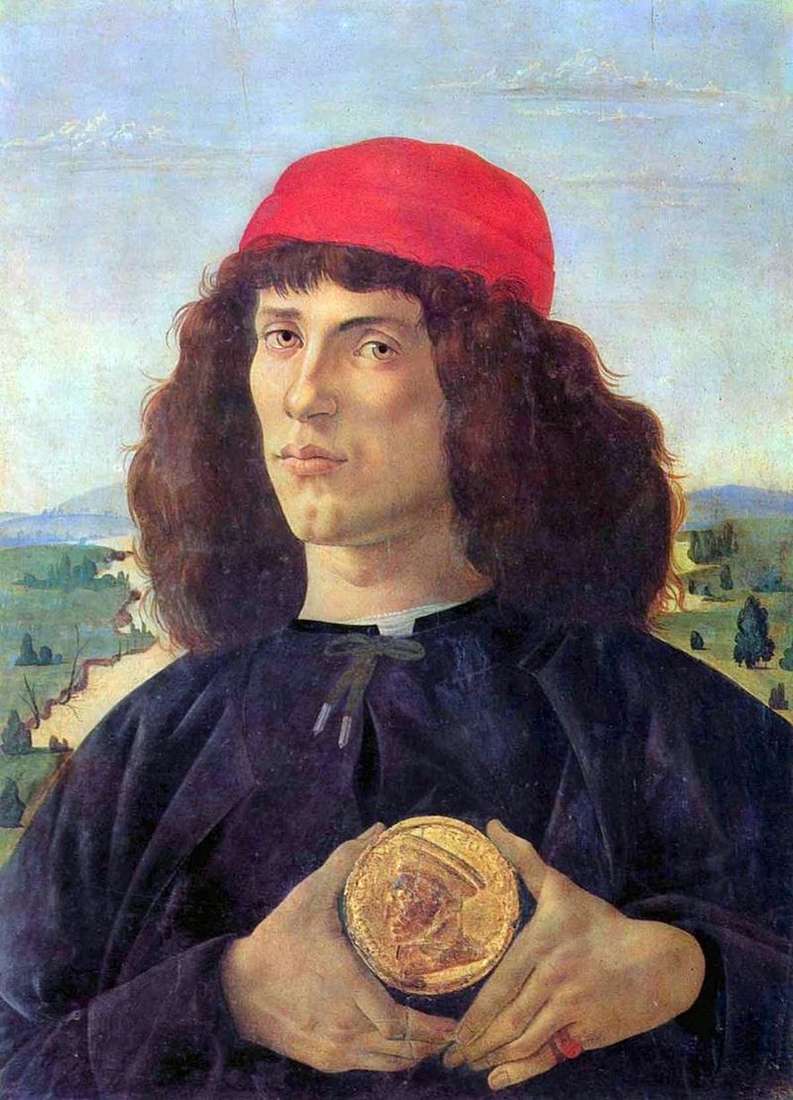 Portrait of a man with a medal by Sandro Botticelli
Portrait of a man with a medal by Sandro Botticelli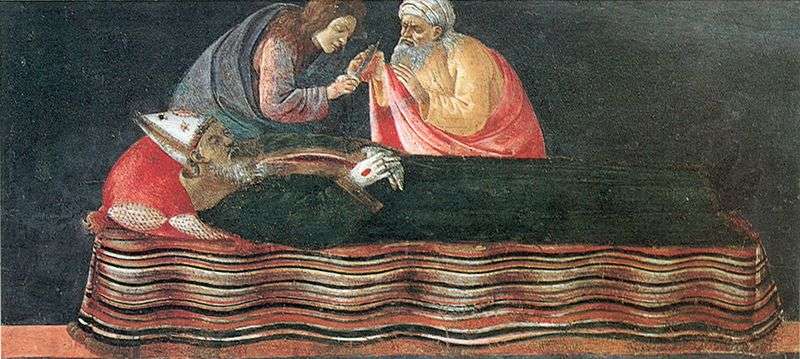 Extracting the Heart of Saint Ignatius by Sandro Botticelli
Extracting the Heart of Saint Ignatius by Sandro Botticelli